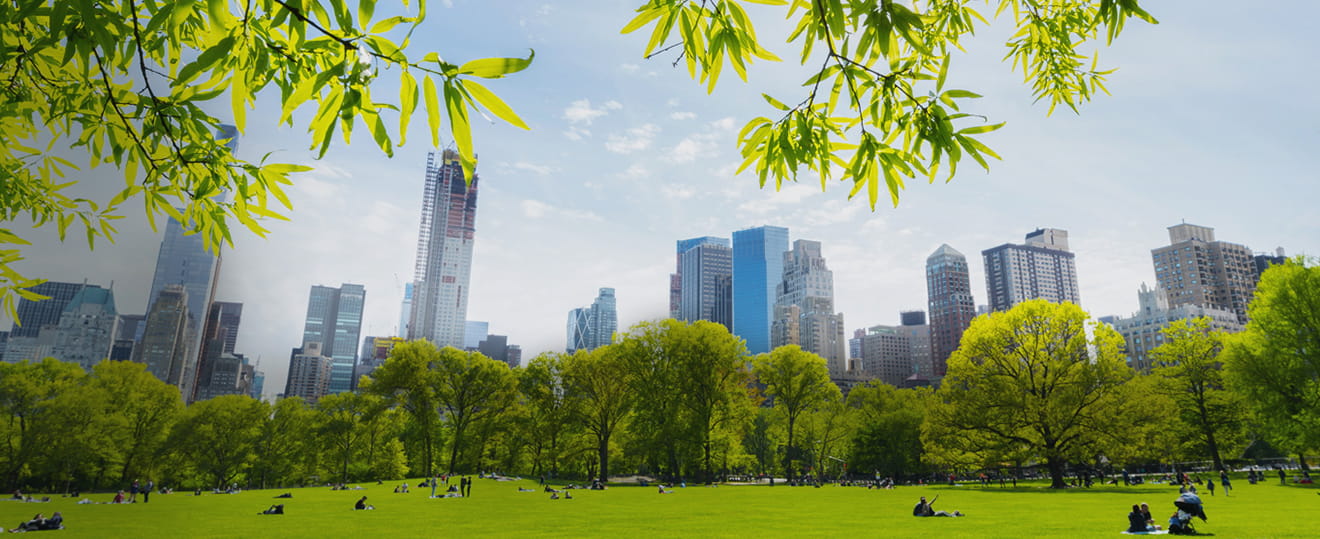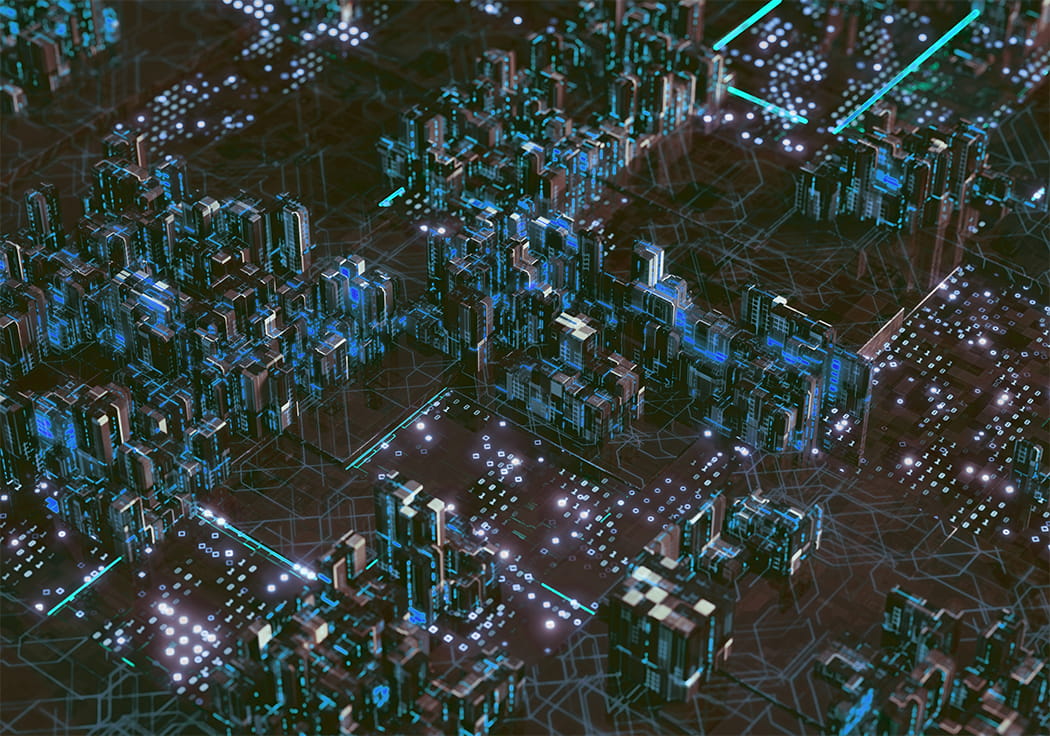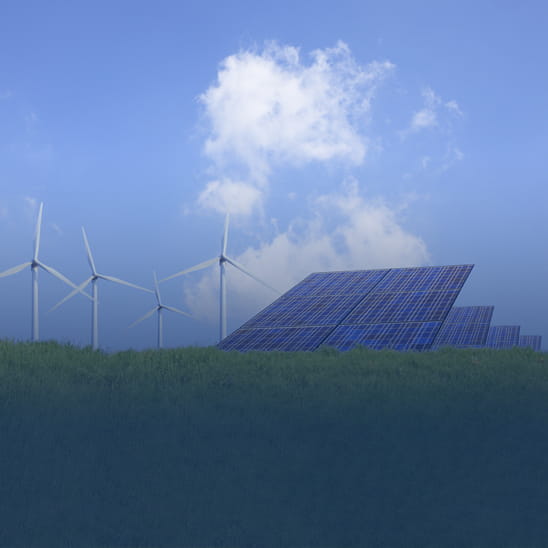
Mastering the Art of Coexistence: A Brave, Symbiotic New World
The world remains in the throes of a viral pandemic that has greatly restricted social and business activity and placed a chokehold on personal consumption. Recent news of promising advances in the development and approval of vaccines is tempered by the realization that the global society must factor co-existence with COVID-19 into rebuilding and reorienting stagnant economies. Corporations are also giving the environment consideration in their plans, as evidenced by the emergence of the term, “green recovery.” The CEOs of 155 companies around the world have jointly signed a statement imploring governments to “align their COVID-19 economic aid and recovery efforts with the latest climate science.” *1 It is imperative that individuals, companies, and governments seize on the opportunity the world has paradoxically been provided and work collaboratively to construct a symbiotic, sustainable economy.
Light at the End of our Tunnel Vision
― A potential remedy to COVID-era economic recovery has been here for decades
The diminutive city of Kalundborg, Denmark has a population of just over 16,000. It is situated on the Kalundborg Fjord 100 kilometers west of Copenhagen, the nation’s capital. For around half a century, it has been the site of remarkable innovation. Government and business formed a network—Kalundborg Symbiosis—within which energy, water, and materials such as waste are shared efficiently, with all participants benefitting*2.
This may be the world’s first and most in-depth examination of industrial symbiosis, a model in which resources remaining after industrial processes can be utilized by other participants, ultimately rewarding all involved while also mitigating the impact of industry on the environment. This model has served as a prototype for the development of sustainable social systems around the world.
Technological progress will soon bring the vision of autonomous control and management of processes to fruition. This will result in tremendous improvements in efficiency and the virtual elimination of waste. Profit generation will require fewer materials and processes and less time and energy. This next era is referred to as “industrial autonomy.” Giving form to this one-time dream will require companies to work cooperatively and eschew their traditional devotion to short-term gain in favor of the longer-term objective of creating a symbiotic economic society.

“An industrial symbiosis constitutes a local partnership where partners provide, share, and reuse resources to create shared value. The purpose of industrial symbiosis is to create loops of technical or biological materials while minimising the leakage and waste in the loops – demonstrating some key parts of a circular economy, at a local scale.”
- “Case studies: Effective industrial symbiosis,” Ellen MacArthur Foundation
The key principle of the industrial symbiotic economy is the transformation of one company’s waste into another company’s valued resource; ensuring resources that initially were discarded unused are routed or provided to another party that can utilize them. If a system can be developed that optimizes the re-use of water, energy, and waste materials while attenuating the environmental burden exerted by the system, and if these processes can be controlled autonomously, the industrial symbiotic economy becomes a viable ambition. The human workload will be reduced, work safety will be greatly enhanced, and processes will become highly efficient.
Yokogawa also believes this is achievable and is in fact working with customers to advance on the journey to industrial autonomy, while also devising solutions to help the world in its paradigm shift toward this new, friendly economy.
The Synergistic Effects of Sharing the Wealth
― The industrial symbiotic economy will bring new work models, new value, and a new, higher quality of life
The way the people of the world use energy—particularly that generated from fossil fuels—in industrial activity and daily life contributes directly to global warming. This makes managing the use of energy while carefully monitoring electricity supply and demand a prudent course of action.
Matching generation to demand is a true challenge, however, despite the great progress made in the introduction of renewable energy sources. Wind, solar, geothermal, and other sources remain vulnerable to weather and other aspects of the natural environment such as a specific location. Power output fluctuates in short and long cycles, and as a result, there may be either severe shortages or considerable surpluses of power depending on the time of day or season.
The widespread availability and acceptance of renewable energy will require advanced technologies and mechanisms to store or use electricity when generated in large volume. These systems will also need to rapidly provide supplemental power when required and to track fluctuations and act to maintain an acceptable balance. Moreover, there are peak periods such as during the summer and winter in which energy use is concentrated. This further complicates the maintenance of the supply-demand balance, and over the course of a year, renders power generation economically inefficient.
The answer may lie in what is referred to as the virtual power plant (VPP). By bundling power resources conserved by users in various areas and managing supply and satisfying demand effectively, the VPP acts as a traditional, physically integrated power plant. Though it requires a cutting-edge energy management system, expectations are high that the VPP can contribute to resolving the issues facing renewable energy.
A VPP features an “aggregator” positioned between power companies and end users to conduct transactions based on power company requests—this is known as “demand response” (DR)*3. There are two types of aggregators: resource aggregators, which enter into agreements with multiple consumers and bundle the suppressed amount of electricity; and aggregation coordinators, which bundle the electricity managed by the resource aggregators and directly trade it. Consumers who cooperate with DR are eligible for lower electricity prices and other incentives.

“Future industries are not simply revised versions of those of today, but will create new sources of wealth that provide new kinds of local work and a higher quality of life where people live.”
- “Towards the Symbiotic Economy: Imagining a Future in 2050”; BFN Business Futures Network/Futurealities presentation to Japan’s Ministry of Land, Infrastructure, Transport and Tourism, March 2, 2018
Yokogawa has successfully enabled the visualization of manufacturing facility operating status and energy usage through the use of Industrial IoT (IIoT). The company is now leveraging this accumulated expertise as a resource aggregator and is helping customers reduce the cost of their electricity by bringing them together with aggregation coordinators.
The principle is also applicable to water supply facilities, a crucial element of industrial and societal infrastructure. Japan’s Kobe City is home to 127 distribution reservoir locations and 51 water pumping stations. The population decline in Japan—which of course has also impacted Kobe—has resulted in a water supply surplus.
As the resource aggregator, Yokogawa is supporting Kobe, the consumer. Yokogawa monitors reservoir levels and the power adjustments necessary for compliance with DR. It then transforms the time of day and adjustment volume into signals that control pump operation. When, for instance, the electricity supply is insufficient and the power provider, or Transmission System Operator (TSO) requests a reduction in power consumption—referred to as a “turn-down DR”—the resource aggregator sends information to Kobe City regarding the DR and the water level in the reservoir, and the pump is then turned off and water is stopped from entering the reservoir. Naturally, this is accomplished in a manner that ensures no impact on water supply. Conversely, a “turn-up DR,” when there is a surplus in the supply from the power grid, entails an adjustment to the operation timing schedule to shift pump operation to a more appropriate time frame, which increases the amount of power consumed. Kobe City is monitoring 17 distributed pump stations and executing DR adjustments. This represents the integration of distributed energy resources and the creation of new value.
Yokogawa has contributed to CO2 emission reductions by integrating energy and production information at its customers’ plants, leading to enhanced production and energy efficiency. Going forward, the company intends to enlist the cooperation of municipal governments and manufacturers as it investigates the utilization of excess capacity including on-site power generation, and control technology for industrial storage batteries for the VPP system. The objective is to further increase the value of surplus energy by learning the characteristics of the power sources of various social infrastructures and industrial customers and integrating them optimally.
COVID-19 has engendered, on a global scale, historic economic and social crises. Given that a paradigm shift in the economic structure is imminent, Yokogawa has considered the kinds of technologies that could support this epochal transition, and what its own contribution can and must be.
In its quest to support the development of an industrial symbiotic economy, Yokogawa will accelerate its support for recycling process evolution and the development of technologies to alleviate the environmental burden, create added value through the efficient use of resources, and contribute to reducing CO2 emissions by supporting the proliferation of new power distribution paradigms. It will continue to work closely with customers, governments, and other stakeholders in determining the best way to pass this beautiful planet to future generations. At the same time, it will co-innovate mechanisms and technologies to deliver unprecedented value. Yokogawa aims to be one of the principal authors of the next chapter in the world’s story.
References
*1 : “Over 150 global corporations urge world leaders for net-zero recovery from COVID-19”; Science Based Targets online, July 9, 2020
*2 : A partnership involving 11 public and private companies in Kalundborg, Denmark.
*3 : Demand response is defined by the US Federal Energy Regulatory Commission as “Changes in electric usage by end-use customers from their normal consumption patterns in response to the changes in the price of electricity over time, or to incentive payments designed to induce lower electricity use at times of high wholesale market prices or when system reliability is jeopardized.”



